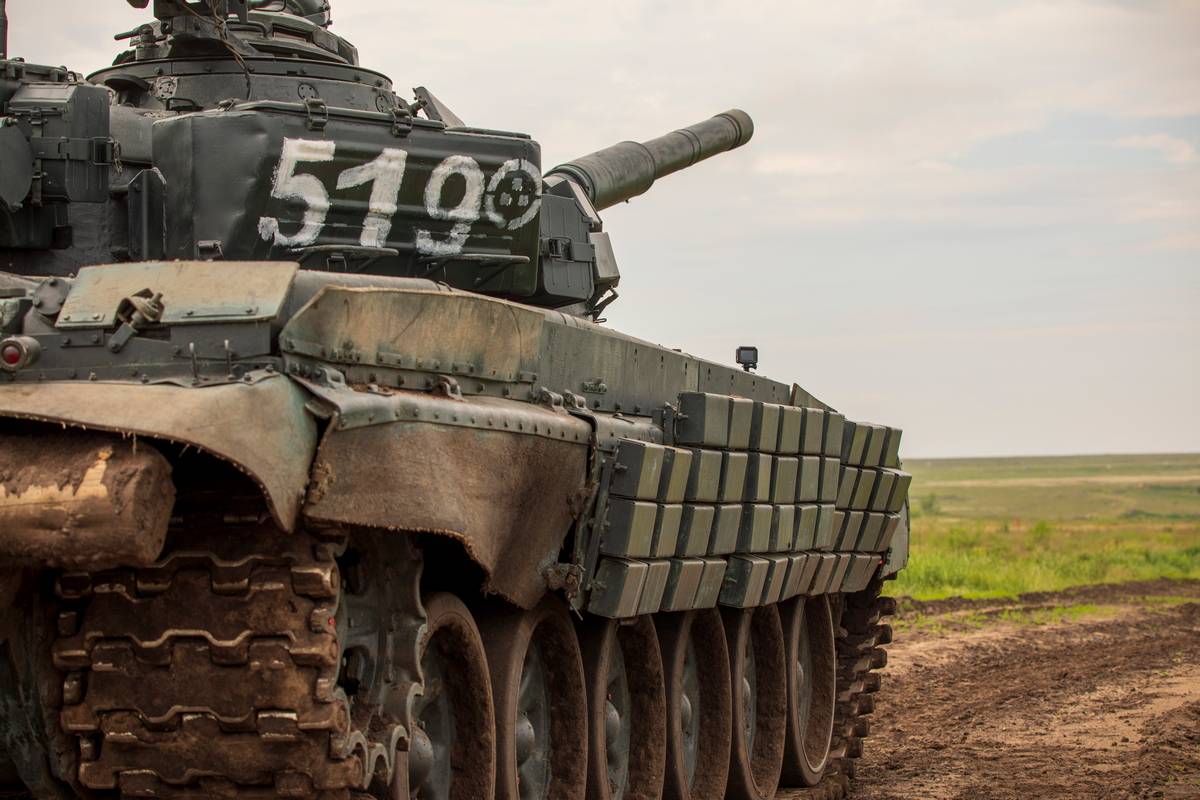Omsktransmash vehicle production plant in russia has obtained a patent for an "innovation" meant to increase the protection of the TOS-1A Solntsepyok heavy thermobaric rocket launcher against explosive FPV drones and anti-tank weapons.
"The novelty is that the combat vehicle of the heavy flamethrower system has a vertical bulwark equipped along the entire length of the upper track skirts on its basic tank chassis, which (the bulwark - ed.) has screens of reactive armor looking sideways, attached using bolted joints," the patent description says, as quoted by a russian media and translated by Defense Express.
Read more: FPV Drones Break Apart the Very Concept of TOS-1 Application on the Battlefield, Ukraine's Example Shows (Video)

So, basically what it means is that the sides of the TOS-1A are shielded with the same explosive reactive armor as applied to ordinary tanks. Such protection is a standard way to enhance russian tanks, including the T-72 which became the chassis for TOS-1, and the T-90 which was transformed into TOS-1A by mounting the rocket launcher instead of the gun.

Defense Express' first guess is that the whole "patenting" thing has the sole aim of processing and appropriation of the money allocated by the Kremlin for research and development and has little to do with the actual effort to improve the vehicle.
As for how effective these screens of ERA will prove, here are a few nuances to consider. First is that such armor will likely be of little help against FPV drones, since they tend to attack from above and target the rocket launcher rather that the chassis, simply because they are easier to hit and often result in more significant damage:
To keep their TOS-1A systems safe from FPVs, russian technicians apply slat armor cages to the rocket racks, even though this method cannot guarantee safety either.

Moreover, the latest type of rocket for TOS-1A should have increased the range of fire up to 10 or even 15 km, according to russian statements. This would be enough to position their rocket systems beyond the reach of anti-tank missiles, therefore reactive armor serves no purpose.
Still, there are much more money to "process," and thus new patents for metal cages and other "innovations" from Omsktransmash may follow in the future. Time will show.
Read more: russia Will Create a New Bicalliber MLRS Vozrozhdenie Based on the Zemledeliye Mine-Laying System














